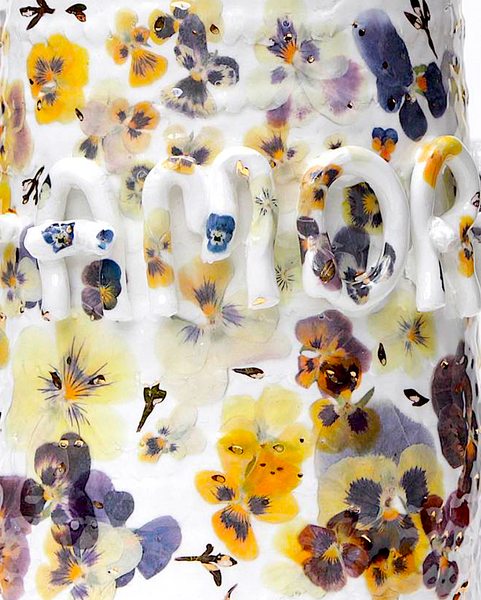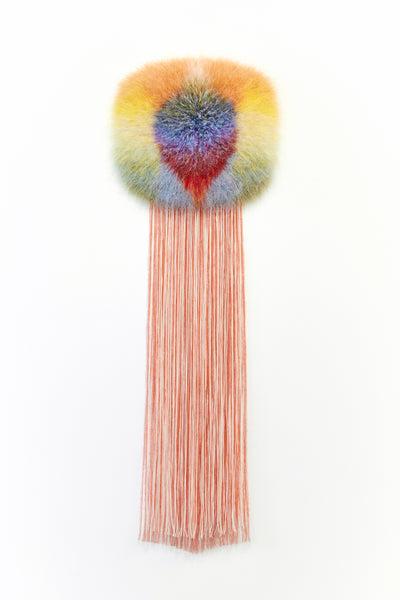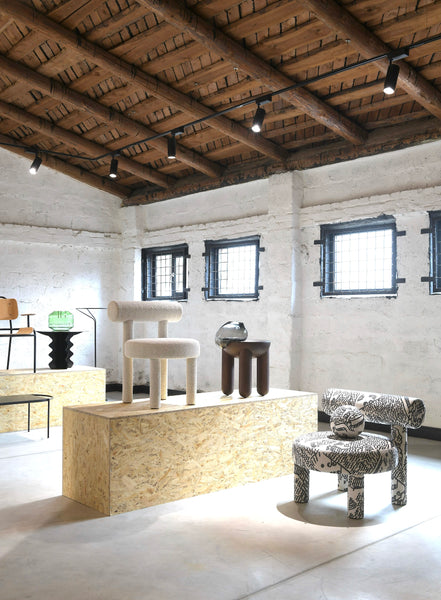Curriculum Vitae
Head and Heart
A conversation with pioneering gallerist Cristina Grajales
Standing at the helm of one of the world’s most respected design galleries, Colombia-born, New York-based Cristina Grajales is a revered expert in contemporary and 20th century design. Her deep knowledge of and passion for design—a marriage of the head and the heart—are palpable in every presentation and in every conversation one has with her, and support her ongoing dedication to cultivating a better understanding and love of design worldwide.
With an impeccable eye for talent, Grajales mounted early, career-defining shows for artists like José Parla and Mira Nakashima while also shedding new light on long-established voices like Sheila Hicks and Robert Wilson, among others. While she celebrates a fabulous range of work and voices, she has a particular passion for textiles and metalwork—both of which she’s championed throughout her career, helping the gallery and its artists stay at the leading edge of the design conversation.

In late 2020, Grajales opened the doors to a new, light-filled gallery space in Tribeca, where she’s since launched a series of outstanding exhibitions, including a special 20th-anniversary group show. Last year, among other highlights, she co-curated an exhibition entitled Las Tres Pieles (The Three Skins) in her hometown’s Museo de Arte de Pereira, set in the foothills of the Andes, exploring the relationships between art, design and architecture. (The acclaimed show, which closed just a few days ago, earned her “a key” to the city of Peireda.) This past month, Grajales gave the prestigious Anna and Joseph Syrop Annual Lecture at Pratt Institute, looking back on her career to date as an expert in contemporary and 20th century design.
We spoke to Grajales about her career, advice for young creatives starting out, and the importance of deep emotional connection to the work.

What first sparked your interest in art and design?
I grew up in a very creative environment. My mother saw beauty in everything around her. Nature was a great inspiration. This environment greatly inspired me and my work.
You came to New York in the 1980s. What initially drew you to the city, and what keeps you there?
The energy and diversity of the city.
Prior to opening your own gallery in 2001, you worked for over a decade as design director at 1950 Gallery in New York. What was that experience like?
It was the beginning of the excitement of post war European design. I was honored to have had the opportunity to work with masterpieces.
When did you know you wanted to launch your own gallery? And what was the catalyst?
The turning, not only, of a century, but the millennium. I felt like I wanted to be part of the new present.

You were well positioned to witness and help form the market for collectible design. How would you characterize the early years, when many people may not have understood how to view design and architecture as an art form? What has it been like to see the world catch up with your vision?
In the beginning, we were all learning about this new field of collectable design. There wasn’t as much information as we have now, and [only] a small pool of collectors. It's been really exciting to see how the market is expanding with new collectors and many more venues to experience the different disciplines.
In your recent, inspiring lecture at Pratt, at one point, referring to your approach you said, “That’s how I like to do business. My heart is in it.” It’s such a simple yet potent statement. Can you expand on that aspect of your approach a bit for us?
I’m an emotional person, and I create deep connections with the pieces that we work with. My heart is involved in the engagement, and it’s my hope that I can translate the love that I feel for those pieces to those willing to learn.

You have a wonderful mix of long-time partners and fresh talent on your roster. How do you approach relationships with artists and designers?
Our relationships with our designers and artists are very important to us. We are respectful, loving, and kind to one another.
To your mind, is there a consistent thread amongst the artist-designers you gravitate towards and champion?
I’m often asked this question. I think it’s a very visceral reaction when I see a piece I love. We appreciate innovation, creativity, execution, and the history behind it.

You recently celebrated the gallery’s 20th anniversary. First off, very big congratulations. Second, in light of this milestone, looking back, how do you think the gallery has evolved over time? Has your mission shifted along the way?
Our mission hasn’t really shifted. From the beginning, we were the first ones to show textiles and jewelry alongside [other] design pieces in our gallery and fairs. The participants have changed, but not our mission and our dreams.
What do you see as your biggest accomplishments over the past 20 years? Are there any particular moments or collaborations that stick out for you?
The work that we have done with Colombian textile company Hechizoo [an innovative, Bogotá-based weaving atelier led by Jorge Lizarazo] has not only educated our clients about their magnificent work but also about Colombia.
Las Tres Pieles, the exhibition that we opened at the Museo de Arte de Pereira, where we introduced the relationship between art, design, and architecture to the people of Colombia. It’s the first of its kind. It’s been a great success, not only for the museum but also for Pereira.

What’s one important lesson you’ve learned in this period?
Patience.
Have the last few years’ tumult reinforced or changed your perception of your work? Of design’s role in the world?
COVID taught us how important our living spaces are. Our homes became our sanctuaries, and it made us appreciate them even more.

What are your hopes as you look toward the future of the gallery and your work?
To keep our innovative spirit and that the work we do is meaningful.
Any advice for other young creatives just starting out in the industry?
Keep the focus—and work hard.
Thank you, Cristina!



